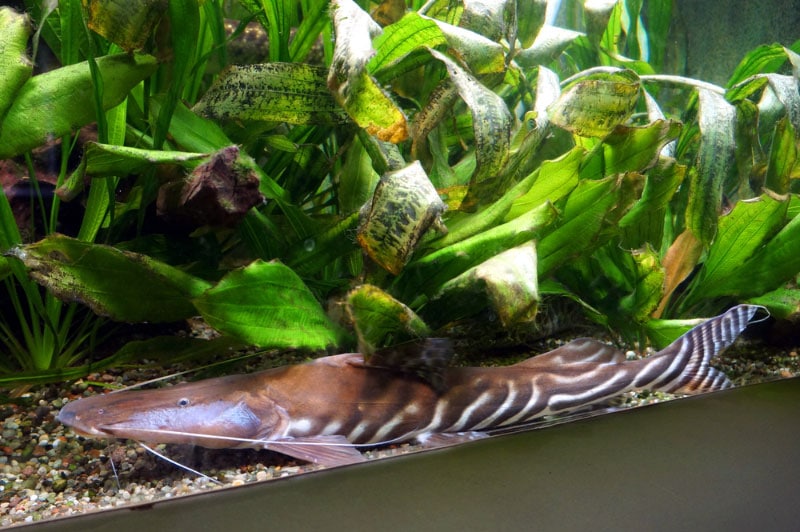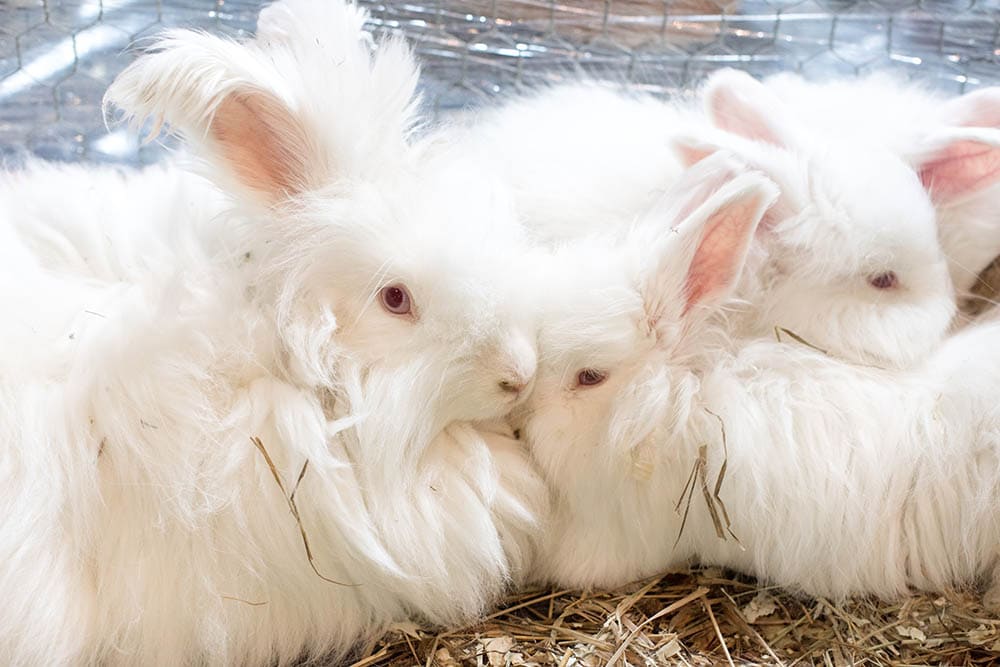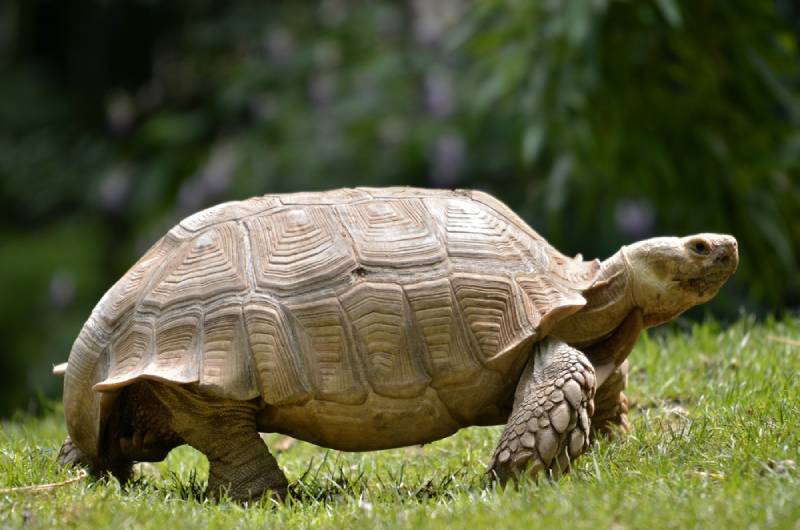While certain fish (like goldfish) always seem to reign supreme when it comes to popularity in the fishkeeping hobby, many people want something unique for their tank. Rare fish are often only sold through specialty retailers, such as local fish stores and online shops, so they can sometimes be hard to acquire. Still, if you’re looking for a rare fish to keep in your aquarium, here are a few of the best options, no matter what type of tank you keep.

The 12 Rare Pet Fish Breeds
1. Zebra Shovelnose Catfish
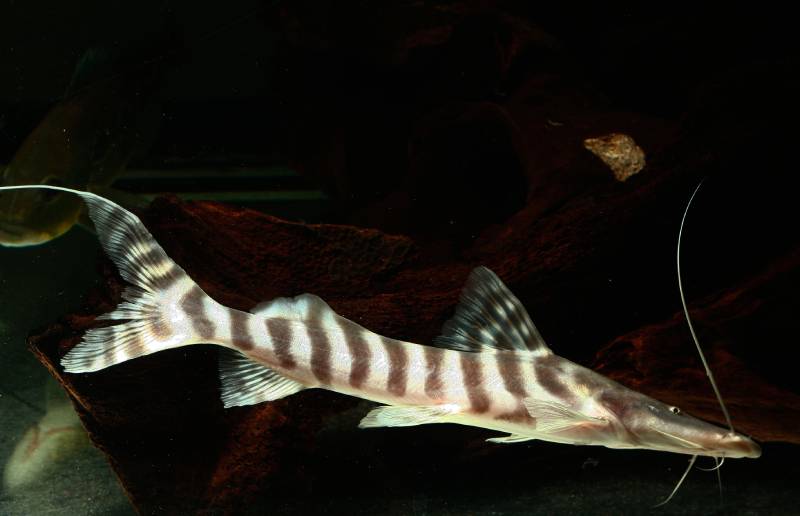
| Adult size: | 24–48 inches |
| Minimum tank size: | 180 gallons |
| Tank mates: | Other large catfish, pacu, oscars, giant gourami |
If you’re looking for a catfish that is not only large but also eye-catching, the zebra shovelnose catfish might be just what you’re looking for. These fish can reach 2 to 3 feet in length in captivity, though some have been reported to reach up to 4 feet in length. They are predatory catfish that should be kept with large tank mates that can’t be eaten by them. If you manage to find one of these for sale and in stock, you can expect to spend at least $200.
2. Zebra Plecostomus
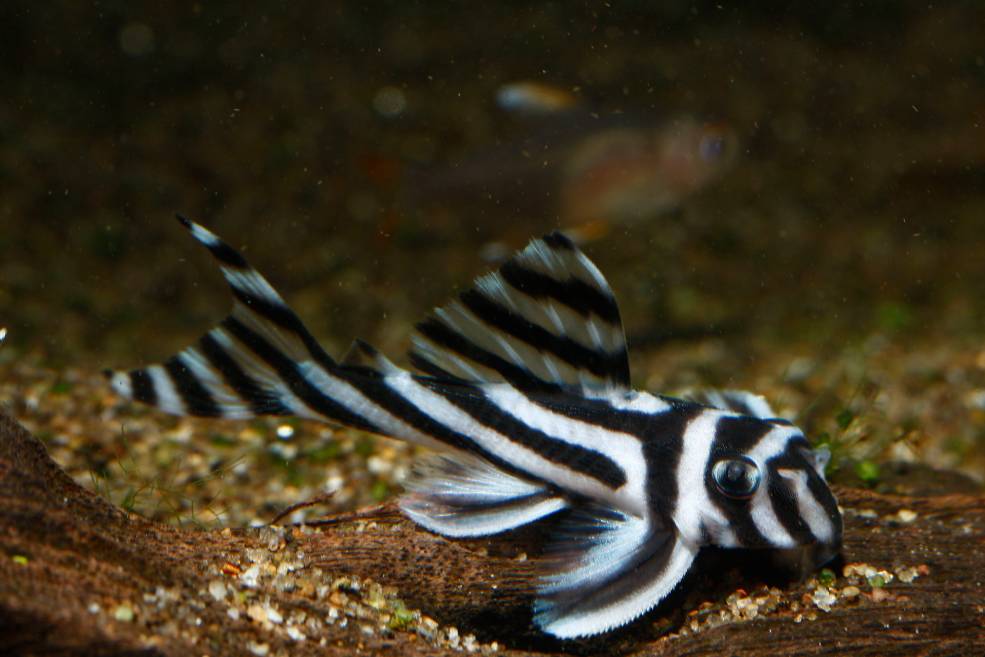
| Adult size: | 3–4 inches |
| Minimum tank size: | 20 gallons |
| Tank mates: | Tetras, platies, harlequin rasbora, Apistogramma |
The zebra plecostomus might be a cousin to the common plecos you spot in every pet store, but their beautiful zebra-patterned scales make them unique and hard to find. Although they are one of the smaller pleco species, only reaching up to 4 inches, they still need a tank that is at least 20 gallons.
They are typically peaceful fish, and they can be kept with tank mates that are smaller than them, including ember tetras. Be prepared to spend upward of $200 on a zebra pleco, with some selling for upward of $1,500.
3. Blue-Eyed Plecostomus
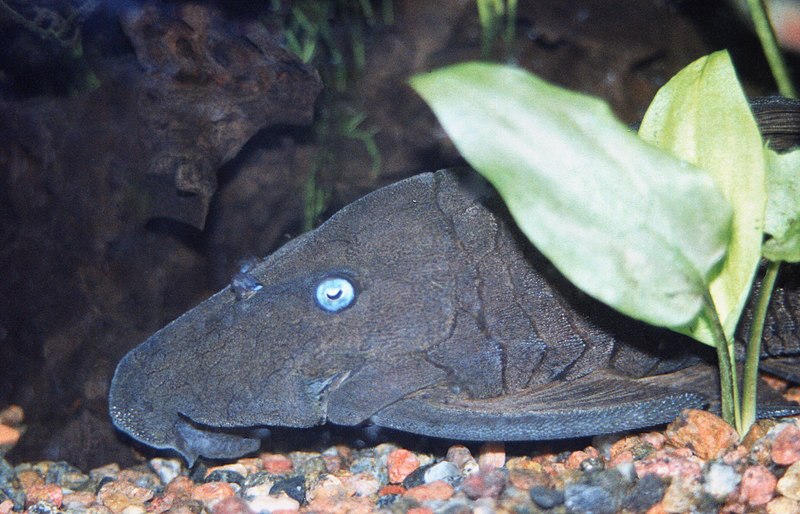
| Adult size: | 12–30 inches |
| Minimum tank size: | 120 gallons |
| Tank mates: | Tetras, danios, glass catfish |
The blue-eyed plecostomus is similar in appearance to the common pleco, but it has a bulkier body and bright, turquoise eyes. It’s a clumsy swimmer, but it spends most of its time at the bottom of its environment.
Since it can reach up to 30 inches in length, this fish needs a tank that is at least 120 gallons once it reaches adulthood. Be prepared to shell out $250 or more for one of these fish.
4. Platinum Arowana
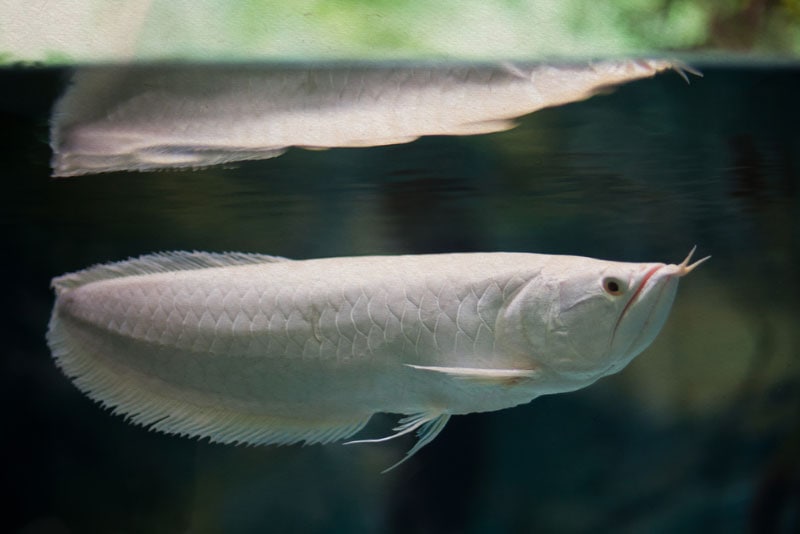
| Adult size: | 48 inches |
| Minimum tank size: | 240 gallons |
| Tank mates: | Semi-aggressive cichlids, clown loaches |
The platinum arowana is an extremely aggressive and predatory fish that can reach up to 4 feet in length. Arowana come in multiple varieties, and the platinum color is one of the most difficult to find and most expensive.
While you can expect to spend upward of $2,000 for one of these rarities, a platinum arowana holds the record for the most expensive freshwater fish in the world, having sold for $400,000. Arowana fish are extremely popular in many Asian countries and may be difficult to find in the U.S.
5. Golden Gar
| Adult size: | 72–78 inches |
| Minimum tank size: | 180 gallons |
| Tank mates: | Large catfish, paddlefish, Nile perch |
The golden gar is not an individual species of fish but is actually a gar fish with a recessive gene that causes it to be a lovely golden color. Gar are prehistoric fish, and many people go fishing for them. If you happen to fish in areas where gar live, you may luck into finding a golden gar on your own.
It can be extremely difficult to find a golden gar for sale, and if you do find one, you can expect to spend at least $700 for a fish with low-quality coloration. High-quality fish can sell for upward of $10,000. Finding tank mates for the Golden Gar can be difficult due to its high level of aggression.
6. Polka-Dot Stingray
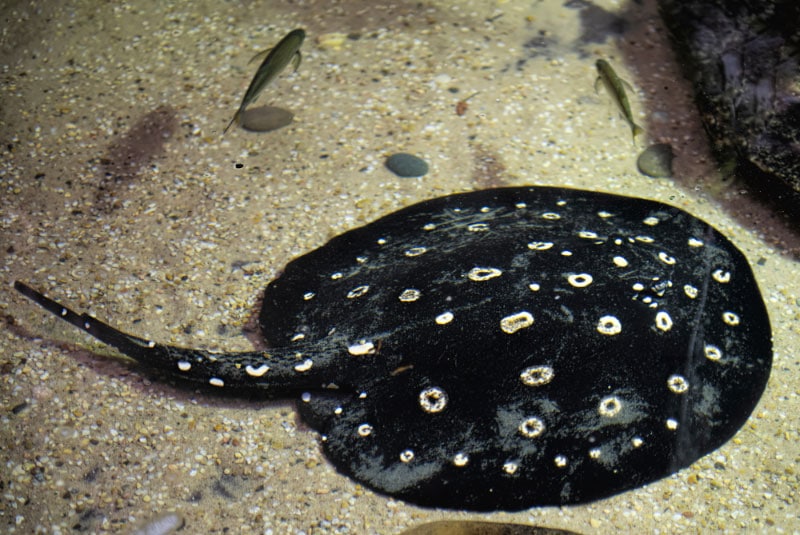
| Adult size: | 30 inches |
| Minimum tank size: | 125 gallons |
| Tank mates: | Other rays, Geophagus, silver dollars, bichirs |
The polka-dot stingray will definitely draw all eyes to your aquarium, thanks to its attention-grabbing coloration and unusual body shape. While these fish can be up to 30 inches in length, they can measure up to 18 inches in width.
Initially, a young polka-dot stingray can be kept in a tank that is at least 75 gallons, but by adulthood, these fish need at least 125 gallons, with 150 gallons or more being preferred. They need lots of space to swim and play. There are multiple variations of the polka dot coloration of this fish, and you can expect prices to start at $400.
7. Peppermint Angelfish
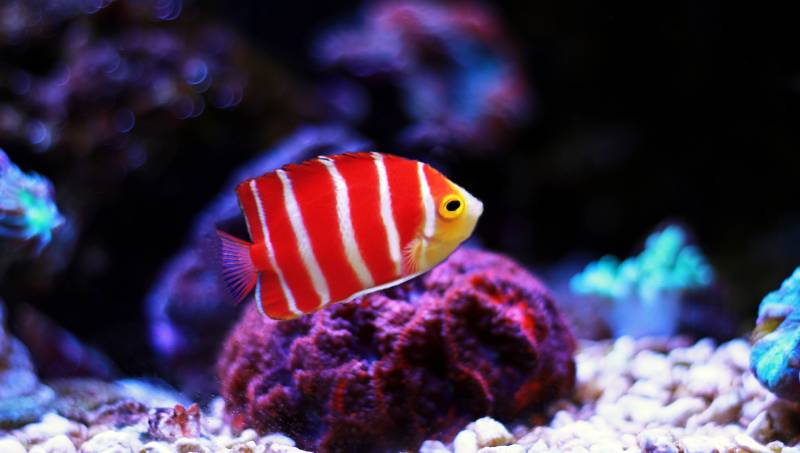
| Adult size: | 2–3 inches |
| Minimum tank size: | 55 gallons |
| Tank mates: | Blennies, gobies, butterflyfish, damsels |
The peppermint angelfish is one of the most sought-after fish in the aquarium hobby, so it can be extremely difficult to find, and it is considered to be one of the most expensive fish in the fishkeeping hobby.
Due to its rarity, you can expect to spend a few thousand dollars purchasing a peppermint angelfish, with some selling for up to $30,000. This saltwater fish may be small, coming in at around 3 inches when fully grown, but it needs at least 55 gallons of tank space.
8. Masked Angelfish
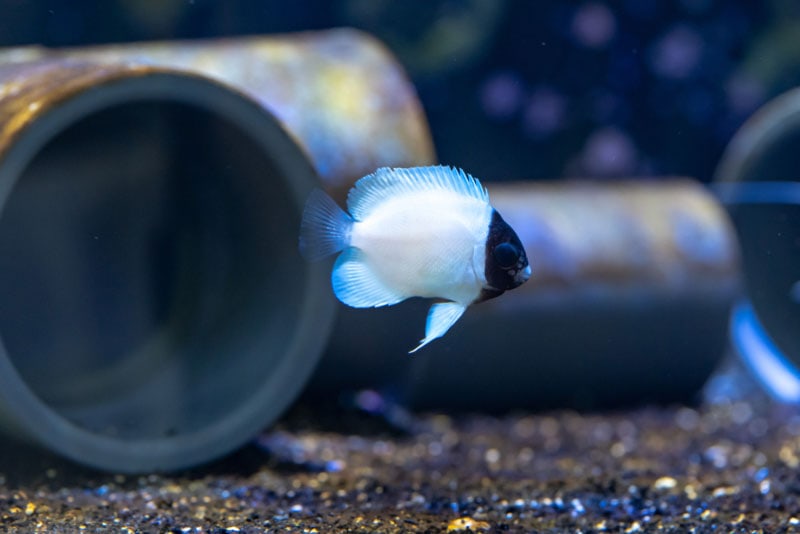
| Adult size: | 6–7 inches |
| Minimum tank size: | 70 gallons |
| Tank mates: | Other reef dwellers |
The masked angelfish is less rare than the peppermint angelfish, but it is still difficult to find. This reef fish reaches up to 7 inches in length, and it requires a tank that is at least 70 gallons. It’s quite shy, so select tank mates carefully to ensure your fish stays happy and healthy.
Like its peppermint cousin, the masked angelfish sells for thousands of dollars, with some selling for up to $20,000. Successful captive breeding programs have begun being established, though, so they may not be rare and overly expensive for much longer.
9. Discus
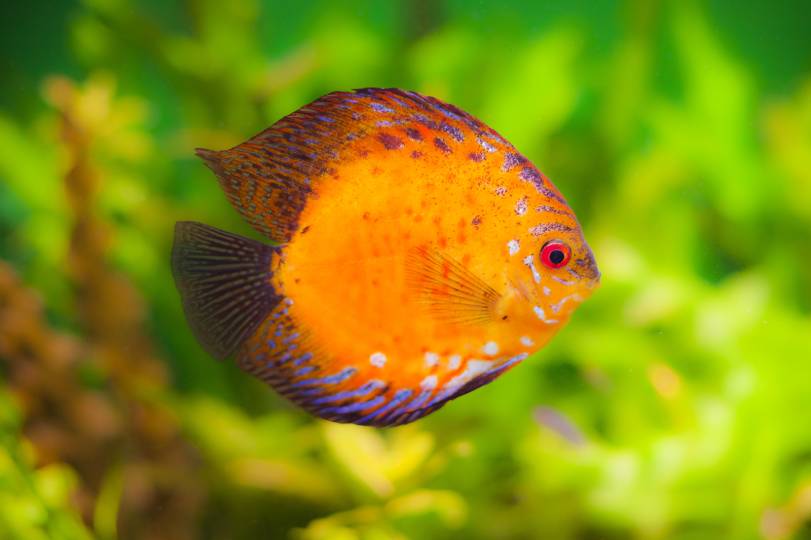
| Adult size: | 5–9 inches |
| Minimum tank size: | 75 gallons |
| Tank mates: | Tetras, corydoras catfish, German blue ram, freshwater |
The discus is a beautiful fish that typically reaches around 6 inches in length, though some have reached up to 9 inches in captivity. It makes a great tank mate for freshwater angelfish due to their similar sizes, body shapes, and tank needs.
There are multiple varieties of the discus, and some of them are far more expensive and rarer than others. Low-quality discus fish can sell for as little as $20, but you can expect to spend upward of $150 for higher-quality fish.
10. Arapaima

| Adult size: | 84–120 inches |
| Minimum tank size: | 1,000 gallons |
| Tank mates: | Pacu, arowana, large catfish |
The arapaima is not only a rare fish but is also considered to be one of the largest freshwater fish in existence. If you manage to bring one of these monsters home, you can expect a fish that reaches up to 10 feet in length and over 400 pounds in weight.
At a minimum, an arapaima needs a 1,000-gallon tank, but 2,500 gallons or more is preferable. Other large fish, especially those found in the Amazon River basin, often make good tank mates for these fish. You can expect to spend at least $90 for a young arapaima, but some sell for up to $7,000.
11. Izumo Nankin Goldfish
| Adult size: | 3–6 inches |
| Minimum tank size: | 10 gallons |
| Tank mates: | Other fancy goldfish varieties, white cloud mountain minnows |
The Izumo Nankin is a rare goldfish variety that is native to Japan. These beautiful fish have a triangular shape when viewed from above, and they are either red or gold and white. If you’re interested in bringing one of these rare goldies home, best of luck to you! It’s extremely difficult to find this goldfish variety outside of Japan. Be prepared to spend at least $250 on an Izumo Nankin, and in many cases, there will be additional shipping and import fees.
12. Royal Clown Loach
| Adult size: | 12–18 inches |
| Minimum tank size: | 100 gallons |
| Tank mates: | Other clown loaches, discus, barbs, tetras, gourami |
The royal clown loach is similar in appearance to the clown loach, but the royal clown is larger, reaching up to 18 inches in length and requiring a tank of at least 100 gallons. Like many loaches, these fish should always be kept in groups to keep them comfortable and happy. While you can expect to spend around $150 for a royal clown loach, it’s important to keep in mind that you’ll need a group of at least three fish, along with a large aquarium.

Conclusion
Rare fish can be difficult to find, and when you do find them, you can expect to spend a pretty penny to bring one home. For serious fishkeepers, though, these investments are absolutely worth it! If you do decide to get a rare fish, make sure your tank is fully set up and ready to go before your fish arrives so you can keep them healthy and help them transition safely to their new home.
Related Reads:
Featured Image Credit: Adriana Iacob, Shutterstock
